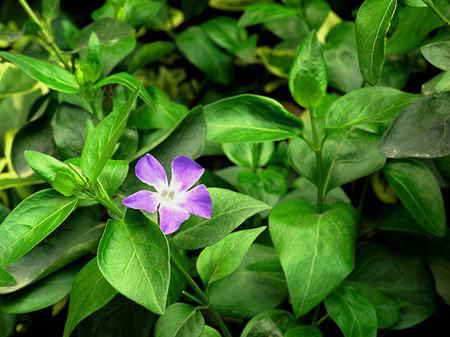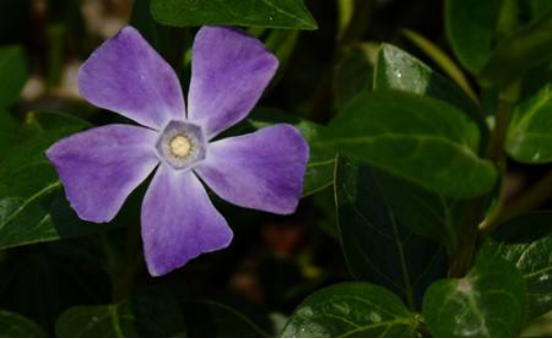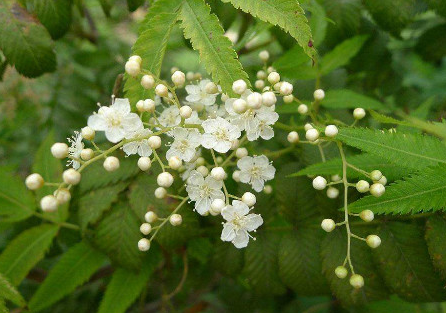Maintenance methods of new plants of Catharanthus roseus
1. Lighting
The new plant of Changchun vine needs to receive sufficient astigmatism first to ensure the normal progress of nutrients and photosynthesis. after survival, it is necessary to choose to grow in a semi-shady environment, and the flowerpot should be kept in a semi-shady place at ordinary times. If the scattered light is sufficient, it can grow rapidly and the flowers are bright.
2. Temperature
Changchun vine is resistant to both heat and cold. Evergreen all the year round, but in the high temperature in summer, we still have to pay attention to the sun protection measures for new plants and cold protection measures in winter to ensure the green and pleasant green of Changchun vines.
3. Soil
The requirement of Changchun vine for soil is good ventilation and good drainage. The basin soil can be made of garden soil, rotten leaf soil and slag.
4. Watering
The new plant of Changchun vine should be given sufficient water during the growth period. When high temperature, through more watering to cool, rainy season to pay attention to drainage, flowering to reduce watering.
5. Fertilization
During the growing period of Changchun vine new plants, fertilizer was applied once a month, and phosphate and potassium fertilizer was applied for 2-3 times.

All right, that's all for today's introduction. Is there anything you don't know about the cutting propagation of Changchun vine? Welcome to comment and leave us a message!
Culture methods and matters needing attention of Changchun vine
The culture method of Changchun vine
Light
Changchun vine is suitable to grow in a semi-shady environment and does not require much light. Usually maintenance should put the flowerpot in the semi-shade, if the scattered light is sufficient, it can grow rapidly and the color is bright. Changchun vine can accept all-day sunshine. Avoid direct sunlight when the sun is strong in summer, but too dark places are actually not conducive to the growth of Changchun vines.
Temperature
Changchun vine is resistant to both heat and cold. The temperature range of normal growth is between 0 and 35 degrees. If the temperature is too low, the plant will basically stagnate, and some leaves may even freeze to death, but the leaves of the periwinkle are still emerald green. If the summer temperature is higher than 35 degrees, it is necessary to cool Changchun vine in order to spend the summer safely.
Soil
The requirement of Changchun vine for soil is good ventilation and good drainage. The basin soil can be made of garden soil, rotten leaf soil and slag. When potting, 3-4 plants can be planted in one pot.
Watering
Changchun vine should change according to the change of temperature. During the growth period, sufficient water should be given. When high temperature, through more watering to cool, rainy season to pay attention to drainage, flowering to reduce watering.
Fertilizer application
During the trailing period of Changchun, fertilizer was applied once a month, and phosphate and potash fertilizer was applied 2-3 times.
Pruning
If the vines are pruned for too long, the vines can branch and grow, the plant shape is beautiful and plump, and it is more ornamental.
Matters needing attention in the culture of Changchun vine
Reproduction
Changchun vine is propagated by sowing, cutting and ramet.
Leaf yellow
If the light of Changchun vine is insufficient or the soil does not meet the growth requirements of Changchun vine, the plant will grow poorly, and the leaves will yellowing or even fall off.
Insect pest
Changchun vine often has Fusarium wilt, canker and leaf spot, so we should pay attention to prevention so that Changchun vine can grow healthily.
Conservation of Changchun vine in four seasons
Spring maintenance of Changchun vine
Spring is the season of recovery of all things, in early spring, the temperature is lower, you can put Changchun vine on the sunlit balcony, windowsill and other places, so that Changchun vine receives sufficient light. When the temperature rises, you can be exposed to the sun for a long time.
Keep the soil moist and control watering. It is generally OK to water normally in spring, and there is no great restriction. However, when Changchun vines blossom, they can be watered less to make the flowers colorful. Fertilization can be applied once or twice a month when the temperature rises gradually.
Changchun vine can be changed in spring, and pruning or coring can be carried out when changing basin to promote branch growth.
Summer maintenance of Catharanthus roseus
Changchun vine is resistant to high temperature, but not to the hot sun. The summer temperature is high, the sun is strong, easy to burn the plants of Catharanthus roseus, so summer can be properly shaded.
Due to the high temperature, you can often spray water around Changchun vines and leaves to reduce the temperature and strengthen indoor ventilation. On rainy days, we should pay attention to the fact that there is no stagnant water in the basin of Changchun vine, so as to avoid rotting roots.
Summer summer days can not be fertilized.
Autumn maintenance of Changchun vine
When the temperature drops gradually in autumn, it can enhance the light and keep the vines in the sunny zone for maintenance.
In autumn, it is necessary to reduce the number of watering, make the basin soil dry and enter a semi-dormant state.
Winter maintenance of Changchun vine
Changchun vine is also a hardy plant, the winter temperature above 0 ℃ can safely pass the winter, but we should pay attention to frostbite, therefore, we should pay attention to cold prevention in winter, if there are conditions, you can spend the winter in a greenhouse.
Don't water and fertilize too much in winter, take the basin soil as the standard, and control the times of watering. It's best not to apply fertilizer.
- Prev

The steps of Cuttage of Catharanthus roseus
1. Soil Catharanthus roseus cuttings should be prepared for breeding soil or sand bed before cuttage propagation. Generally, soil with good ventilation and drainage is required, and basin soil can be made of garden soil, rotten leaf soil and slag. Pour a little water to keep the soil moist. 2. Seasonal Catharanthus roseus cuttings are best in spring or early summer.
- Next

The cause of yellowing of Pearl Plum leaves and its solution
1. Pearl plum leaves yellowing: Pearl plum likes the humid growth environment when the humidity is too low, so if the air is too dry and the humidity is low, its leaves will turn yellow and dry. Solution: spray water around the pearl plum plant or place several pots of water around it
Related
- Fuxing push coffee new agricultural production and marketing class: lack of small-scale processing plants
- Jujube rice field leisure farm deep ploughing Yilan for five years to create a space for organic food and play
- Nongyu Farm-A trial of organic papaya for brave women with advanced technology
- Four points for attention in the prevention and control of diseases and insect pests of edible fungi
- How to add nutrient solution to Edible Fungi
- Is there any good way to control edible fungus mites?
- Open Inoculation Technology of Edible Fungi
- Is there any clever way to use fertilizer for edible fungus in winter?
- What agents are used to kill the pathogens of edible fungi in the mushroom shed?
- Rapid drying of Edible Fungi

